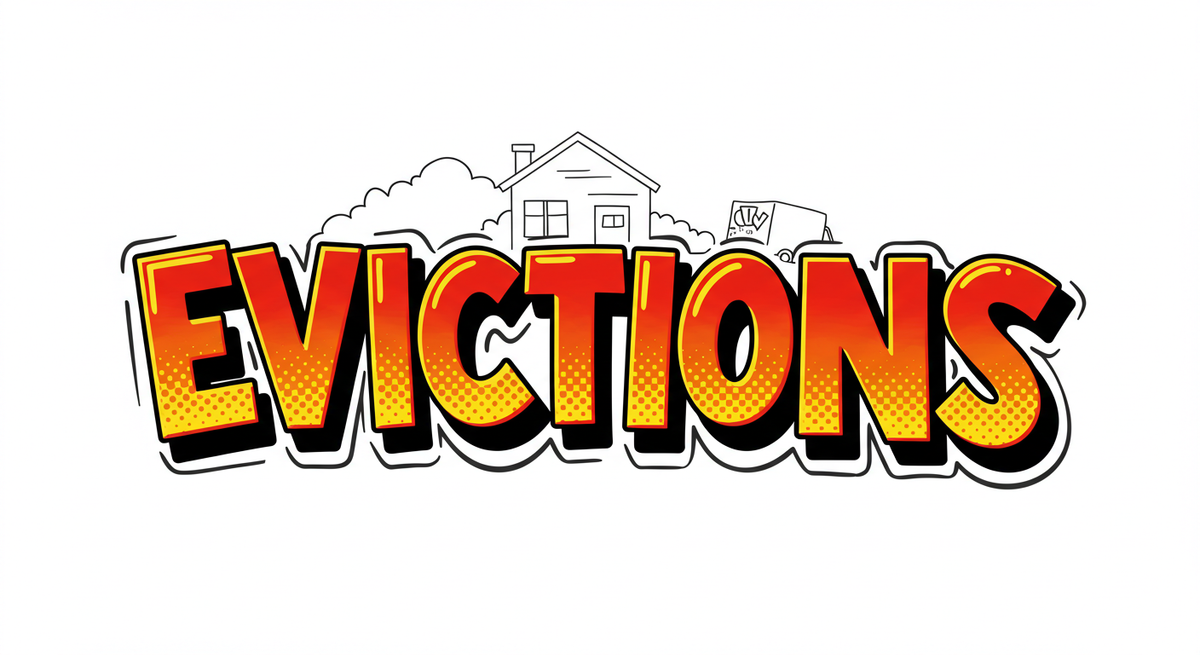Grace Periods in Property Management: The Complete Guide For Landlords
A grace period represents the specific timeframe after rent's due date when tenants can pay without facing late payment penalties or negative consequences

A grace period represents the specific timeframe after rent's due date when tenants can pay without facing late payment penalties or negative consequences.
Here's something that might surprise you: Only 23 out of 51 U.S. states and territories actually require landlords to provide grace periods. That means 28 states leave it entirely up to landlords whether tenants get any breathing room before late fees kick in.
In this article, you'll learn what grace periods mean in practice, how they vary dramatically by state, the legal risks of getting them wrong, and actionable strategies to implement win-win policies that work for both you and your tenants.
What Is a Grace Period in Property Management?
A grace period is the specified number of days after the rent due date during which tenants can make their rental payment without incurring late fees, interest charges, or other penalties. According to government housing handbooks, this timeframe serves as a buffer between the official due date and when consequences begin.
The concept extends beyond just avoiding late fees. Grace periods provide tenants extra time to handle unforeseen circumstances like delayed paychecks, bank processing delays, or temporary financial obligations. For landlords, they serve as a practical tool for maintaining tenant relationships while still protecting rental income and avoiding missed deadline complications.
Key variations include:
- Standard grace periods: Most commonly 5 days (used by 10 states)
- Extended grace periods: Massachusetts at 30 days, Maine at 15 days
- Short period accommodations: Texas and Utah with just 2 days
- Zero grace periods: 28 states require no grace period
- Conditional grace periods: New Jersey's 5-day period for seniors only
Grace periods differ significantly from payment deferrals or student loan grace periods you might encounter with mortgage loans or educational debt. Unlike student loan grace periods that can extend for months after graduation, rental grace periods are measured in days and reset with each monthly payment cycle.
The legal framework varies dramatically by location. The Uniform Residential Landlord and Tenant Act (URLTA) establishes that grace periods are fundamental components of rent payment guidelines alongside late fees and rent increase processes.
Some states mandate minimum grace periods, while others leave the decision entirely to landlords. For properties dealing with chronic late payers, it's essential to understand how grace periods connect to broader eviction laws by state to ensure full legal compliance.
Impact & Applications: Why Grace Periods Matter
Operational Impact
Longer tenancies mean reduced turnover costs, which can easily reach $1,000-$3,000 per unit when factoring in marketing, screening, cleaning, and vacancy periods.
Each avoided eviction saves substantial legal costs and preserves rental income that would otherwise be lost during lengthy court proceedings. Understanding non-payment as a primary eviction cause can help property managers see grace periods as proactive eviction prevention tools.

Real-World Application
Example: Turning Late Payments Into Tenant Loyalty
- Challenge: A 50-unit apartment complex in Denver was experiencing 40% of tenants paying late each month, creating cash flow problems and administrative headaches. The property had no formal grace period policy, leading to inconsistent late fee application and tenant complaints.
- Solution: Management implemented a 7-day grace period (matching Colorado's requirement) with clear communication in lease agreements and tenant orientation materials. They integrated automated tracking through their property management software and established standardized late fee structures of $50 or 5% of rent, whichever was lower.
- Outcome: Late payment rates dropped to 22% within six months. Tenant satisfaction scores increased by 30%, and average tenancy duration extended from 14 months to 19 months. The property avoided 8 potential evictions in the first year, saving an estimated $24,000 in legal and vacancy costs.
- Takeaway: Structured grace periods with clear communication can transform operational challenges into competitive advantages while maintaining strong cash flow performance.
Legal & Compliance Essentials
Grace period requirements vary dramatically across jurisdictions, creating compliance challenges for property managers operating in multiple locations.
State-level requirements show dramatic variation:
Longest Grace Periods:
- Massachusetts: 30 days (longest in the nation)
- Maine: 15 days
- Connecticut: 9 days • Alabama, Alaska, Colorado: 7 days each
Most Common Requirements:
- 5-day grace periods: Arizona, Arkansas, Delaware, District of Columbia, New York, North Carolina, Tennessee, Virginia, Washington, Wisconsin
- 3-day grace periods: Nevada, Idaho, Wyoming
- 2-day grace periods: Texas, Utah
Special Cases:
- New Jersey: 5-day grace period for seniors only
- 28 states: No mandatory grace period requirement
Documentation requirements are non-negotiable. Lease agreements must clearly specify grace period duration, late fee amounts, and bill payment processing procedures. Legal resources emphasize that failure to properly document these policies can render late fees unenforceable and create legal vulnerabilities.
Local ordinances can exceed state minimums. Washington D.C. requires a 5-day grace period with late fees capped at 5% of monthly rent. Emergency situations, like the COVID-19 pandemic, have demonstrated how quickly local governments can extend grace periods, requiring rapid policy adaptations.
Key compliance pitfalls to avoid:
• Applying grace periods inconsistently across tenants
• Charging late fees before grace periods expire
• Failing to update policies when moving between jurisdictions
• Inadequate lease agreement language defining payment timing
For properties dealing with chronic late payers, understanding eviction procedures following grace period expiration becomes critical. However, property managers should also consider alternative resolutions after grace period violations before pursuing formal eviction proceedings.
Best Practices for Grace Period Management
Step-by-Step Grace Period Implementation Checklist
Phase 1: Legal Research & Compliance
□ Research your state's mandatory grace period requirements
□ Check local municipal ordinances for additional requirements
□ Review sample lease language from state housing authorities
□ Consult with local housing attorney if operating across multiple jurisdictions
□ Document eligibility requirements and compliance deadlines
Phase 2: Policy Development
□ Establish grace period duration (recommend 5 days for most markets)
□ Define maximum late fee amounts per local regulations
□ Create clear payment processing definitions (when is payment "received"?)
□ Develop emergency situation protocols for natural disasters or health crises
□ Set bill payment and cash advance accommodation procedures
Phase 3: Documentation & Communication
□ Update lease agreements with precise grace period language
□ Create tenant orientation materials explaining payment policies
□ Develop automated payment reminder systems
□ Design late payment notice templates
□ Establish procedures for documenting grace period violations
Phase 4: Technology Integration
□ Configure property management software for automatic grace period tracking
□ Set up late fee assessment automation
□ Create reporting dashboards for monitoring grace period utilization
□ Test electronic payment processing timelines
□ Verify credit report accuracy and timing protocols
Phase 5: Performance Monitoring
□ Track late payment rates before and after implementation
□ Monitor tenant satisfaction scores and retention rates
□ Calculate cost savings from reduced eviction proceedings
□ Review monthly payment patterns and cash flow impact
□ Assess nonpayment trends and adjust policies as needed
1. Implement Jurisdiction-Appropriate Policies
Research your local requirements thoroughly and consider exceeding minimum mandates when operationally feasible. Professional associations recommend implementing standardized grace period policies that comply with the most restrictive applicable regulations. A 5-day grace period works well for most residential properties while providing tenant accommodation without encouraging late payment habits. Document all policies clearly in lease agreements with specific language defining when payments are considered "received."
2. Leverage Technology for Consistent Application
Use property management software that automatically tracks grace periods and assesses late fees. Modern platforms can integrate with payment processing systems to eliminate confusion about payment timing and ensure compliance across your entire portfolio.
This technology investment pays for itself through reduced administrative overhead and improved accuracy. Many tenant retention benefits of grace periods become more measurable when tracked through integrated property management systems.
3. Establish Clear Communication Protocols
Develop standardized tenant orientation procedures that explain grace period policies during move-in. Create payment reminder systems that notify tenants before rent due dates and again when grace periods are about to expire. Clear communication prevents misunderstandings and demonstrates professional property management practices.
4. Monitor Performance Metrics Regularly
Track key indicators including late payment rates, grace period utilization, tenant satisfaction scores, and eviction rates. These metrics help optimize policies and demonstrate the business value of appropriate grace period accommodations. Quarterly reviews ensure policies remain aligned with operational objectives and market conditions.
Key Questions Answered
What's the difference between a grace period and payment deferment?
A grace period provides short period accommodation (typically 2-30 days) before late fees apply, while payment deferment involves formal agreements to postpone payment obligations for extended periods. Grace periods reset with each monthly payment cycle, whereas deferments may affect multiple payment cycles and often require specific documentation or hardship verification.
HUD programs mandate 24-month grace periods for over-income public housing families, which represents a specialized form of extended accommodation rather than a typical rental grace period.
How is grace period timing calculated for the typical grace period?
Grace periods typically begin the day after rent is due and continue for the specified number of days. If rent is due on the 1st with a 5-day grace period, late fees can be assessed starting on the 7th. Some jurisdictions specify whether weekends and holidays count toward grace period calculations, so verify local requirements and check with credit bureaus about reporting practices.
Can grace period policies change during existing leases?
Grace period modifications generally require lease amendments or must wait until lease renewal, unless local emergency ordinances mandate changes. Increasing grace periods mid-lease typically poses no legal issues, but reducing them may require proper notice and tenant agreement.
Always consult local housing authorities before making policy changes affecting existing tenants to avoid negative consequences. Understanding how to raise rent on a tenant provides insight into proper notification procedures that also apply to grace period modifications.
Grace Period FAQ: Common Questions Answered
Eviction and Late Fee Questions
Can you be evicted for not paying late fees?
Quick Answer: No, you generally cannot be evicted solely for unpaid late fees. Late fees are not considered sufficient grounds for eviction in most jurisdictions, as they are penalties rather than essential lease obligations.
Detailed Explanation:
Late Fees vs. Rent Distinction:
- Rent payments are essential lease obligations, and non-payment can lead to eviction
- Late fees are penalties for delayed payment but do not constitute grounds for eviction by themselves
- Late fees are typically considered "additional charges" separate from base rent under most state laws
How Landlords Handle Unpaid Late Fees: When tenants don't pay late fees, landlords typically have these options:
- Deduct from security deposit when the tenant moves out
- Apply payment allocation - if you pay only base rent but owe late fees, payment may be applied to outstanding late fees first, potentially leaving you short on current rent
- Pursue collection through other legal means, but not eviction
- Non-renewal of lease for chronic late payment patterns
When Late Fees Can Indirectly Lead to Eviction:
- Payment allocation issues: If late fees accumulate and affect your ability to pay current rent in full
- Lease violations: Consistently paying late (even if you eventually pay) can constitute a lease violation
- Material breach clauses: If your lease specifically treats unpaid late fees as grounds for termination
- Combined debt: When late fees plus unpaid rent create substantial arrears
State-Specific Examples:
- Texas: Late fees alone are insufficient for eviction, but must not exceed 10-12% of monthly rent
- California: Late fees cannot be grounds for eviction unless considered "additional rent" in the lease
- New York: Late fees must be "reasonable" and cannot be sole eviction grounds
Protective Strategies:
- Always pay rent first, then address late fees
- Understand your lease's payment allocation terms
- Communicate with landlords about payment plans for accumulated fees
- Document all payment attempts and communications
- Review lease language regarding late fee treatment and consequences
Consequences After Grace Period Expiration
What are the consequences of late rent exceeding the grace period?
Quick Answer: Once grace periods expire, landlords can immediately assess late fees, begin eviction proceedings, and take collection actions. Consequences escalate progressively, with potential long-term impacts on credit and housing access.
Immediate Consequences (Day 1 After Grace Period):
Financial Penalties:
- Late fees apply immediately according to lease terms
- State-specific limits: Texas caps fees at 12% of monthly rent (4 or fewer units) or 10% (more than 4 units)
- Daily late fees may begin accruing in some jurisdictions
- Interest charges on unpaid amounts where legally permitted
Legal Status Changes:
- Lease violation occurs - paying even one day late technically constitutes breach of contract
- Notice period begins - landlords can start formal notice procedures
- Documentation trail starts for potential eviction proceedings
Progressive Escalation Timeline:
Week 1-2: Administrative Actions
- Formal late rent notices sent
- Late fee assessment and documentation
- Payment reminders and tenant communication
- Internal tracking of violation patterns
Week 3-4: Formal Legal Notices
- Pay-or-quit notices served (typically 3-day notices)
- Legal notice requirements fulfilled per state law
- Eviction paperwork preparation if payment not received
- Cure period opportunities provided where required by law
Month 1+: Legal Proceedings
- Court filings initiated for eviction
- Credit reporting begins (typically after 30+ days delinquent)
- Collection agency involvement possible
- Legal costs begin accumulating
State-Specific Timeline Examples:
Texas (2-day grace period):
- Day 3: Late fees apply (up to 10-12% of rent)
- Day 6: 3-day notice to quit can be served
- Day 9+: Eviction filing possible
- Month 1+: Credit reporting and collection actions
New York (5-day grace period):
- Day 6: Late fees apply (maximum $50 or 5% of rent)
- Day 9: 3-day notice can be served in some cases
- Day 12+: Eviction proceedings can begin
- Stronger tenant protections may extend timelines
Massachusetts (30-day grace period):
- Day 31: Late fees apply
- Day 44: 14-day notice to quit can be served
- Day 58+: Eviction filing possible
- Extended protections for tenants throughout process
Long-Term Consequences:
Credit and Financial Impact:
- Eviction filings appear on credit reports for 7 years
- Judgment collections can affect credit scores significantly
- Future housing applications may be denied due to eviction history
- Security deposit forfeiture for accumulated fees and damages
Housing Access Challenges:
- Rental application rejections due to eviction records
- Higher security deposits required by future landlords
- Limited housing options in competitive markets
- Co-signer requirements for future leases
Tenant Protection and Response Strategies:
- Immediate communication with landlord upon payment difficulties
- Emergency rental assistance programs (dial 2-1-1 for local resources)
- Legal aid consultation for tenant rights protection
- Payment plan negotiation before formal proceedings begin
- Documentation of all communications and payment attempts
Resource and Information Access
Where can you find more information about your rights regarding grace periods?
Quick Answer: Grace period rights information is available through multiple channels including government resources, legal aid organizations, tenant rights groups, and online databases. The key is knowing which sources are authoritative for your specific jurisdiction.
Federal Government Resources:
Primary Federal Agencies:
- HUD (Housing and Urban Development): 1-800-669-9777
- Provides information on federally subsidized housing grace periods
- 24-month grace periods for over-income public housing families
- Emergency rental assistance program directory
- Consumer Financial Protection Bureau: consumerfinance.gov
- Tenant protection resources and complaint filing
- Legal Services Corporation: lsc.gov
- Directory of local legal aid providers
State Government Resources:
State Housing Authorities and Law Libraries:
- California: Department of Consumer Affairs - Comprehensive tenant rights guides
- New York: Division of Housing and Community Renewal - Rent stabilization resources
- Texas: State Law Library at guides.sll.texas.gov/landlord-tenant-law
- Texas: Department of Housing and Community Affairs
- Colorado: Department of Regulatory Agencies Real Estate Division
- Massachusetts: Attorney General's Office - Tenant rights publications
State-Specific Examples:
- Texas Tenant Advisor: texastenant.org for late fee guidance
- New York Attorney General: Residential tenant rights guides
- California Tenant Resources: Multiple state agency publications
Local Government and Community Resources:
Municipal and County Services:
- 311 Services: Available in major cities for tenant rights information
- Housing authorities: City and county-level tenant education programs
- Code enforcement departments: Local ordinance information
- Courthouse self-help centers: Forms and filing assistance
Legal Aid and Advocacy Organizations:
National Organizations:
- National Low Income Housing Coalition: nlihc.org
- Legal Aid Society: Local chapters provide free consultation
- Tenants Together: tenantstogether.org (California-focused but national resources)
Local Resources:
- Tenant unions: City-specific organizations
- Community action agencies: Rental assistance and rights education
- Law school legal clinics: Student-supervised tenant representation
- Mediation services: Alternative dispute resolution
Comprehensive Online Databases:
Legal Information Websites:
- Nolo.com: State-by-state landlord-tenant law summaries with grace period specifics
- Avail.co: Free comprehensive landlord-tenant law guides
- LegalZoom: Tenant rights resources and document templates
- Justia: Free legal information database
Specialized Housing Databases:
- RentData.org: Local rent control and tenant protection databases
- JustShelter.org: Emergency tenant assistance resources
- National Apartment Association: naahq.org for industry standards
- Institute of Real Estate Management: irem.org for professional guidelines
Professional and Educational Resources:
Professional Organizations:
- Property management associations: Educational materials for landlords and tenants
- Real estate attorney directories: Specialized landlord-tenant law practitioners
- State bar associations: Free legal clinic directories and referral services
Academic Resources:
- University law libraries: Public access to legal databases
- Housing research centers: Policy analysis and tenant protection studies
- Government housing handbooks: Technical definitions and procedures
Emergency and Immediate Assistance:
Crisis Resources:
- 211 (dial 2-1-1): Comprehensive directory of local emergency rental assistance
- Salvation Army/Catholic Charities: Emergency rent assistance programs
- Community development corporations: Housing counseling services
- Local emergency services: City and county emergency rental assistance
Documentation and Research Strategy:
Step-by-Step Research Approach:
- Start with your lease agreement - Review specific grace period and late fee terms
- Check state law requirements - Use state law library resources
- Verify local ordinances - Contact city/county housing departments
- Consult authoritative sources - Government websites (.gov) and established legal resources
- Seek professional guidance - Legal aid for complex situations
Red Flags to Avoid:
- Unofficial forums or social media for legal advice
- Outdated information - Always verify publication dates
- Non-jurisdiction specific advice that doesn't account for local laws
- Commercial websites that may have conflicts of interest
Documentation Best Practices:
- Save copies of all relevant laws and regulations
- Note publication dates and last update information
- Contact information for follow-up questions
- Multiple source verification for important legal points
Property Manager Payment Grace Periods
How much grace period would I allow for a property manager to remit payments due to me?
Quick Answer: Property owners typically allow 5-10 business days for property managers to remit rent collections, but this should be clearly defined in management agreements.
Standard Industry Practices:
Common Timeframes:
- 5 business days: Most common for local property managers
- 10 business days: Standard for larger management companies
- 15 business days: Maximum recommended timeframe
- Monthly remittance: Acceptable for stable, long-term relationships
Factors Affecting Grace Period Length:
Management Company Size:
- Small/local managers: 5-7 days typical
- Regional companies: 7-10 days standard
- National companies: 10-15 days common due to processing complexity
Payment Processing Methods:
- Direct deposit: 3-5 business days
- Check payments: 7-10 business days including mail time
- Wire transfers: 1-3 business days (higher fees)
- ACH transfers: 3-5 business days
Contract Language Examples:
Recommended Clause: "Property Manager shall remit all collected rents, less agreed-upon fees and expenses, within seven (7) business days of receipt. Late remittance beyond this period shall incur penalties of 1.5% per month on outstanding amounts."
Grace Period Structure:
- Days 1-7: Normal remittance period
- Days 8-10: Grace period with notification requirement
- Day 11+: Late fees and potential contract breach
Best Practices for Property Owners:
- Define "business days" clearly (excluding weekends/holidays)
- Require monthly statements regardless of remittance schedule
- Include penalty clauses for late remittance
- Specify handling of partial payments and tenant grace periods
- Establish emergency contact procedures for payment delays
Lease Documentation Requirements
Does the lease explicitly say what the late fee will be for the lease term?
Quick Answer: Yes, leases must explicitly state late fee amounts, timing, and conditions to be legally enforceable. Vague or missing late fee clauses can render them completely unenforceable, and specific legal requirements vary significantly by state.
Legal Requirements for Enforceable Late Fee Clauses:
Essential Elements (All Must Be Present):
- Specific dollar amount or exact percentage of rent calculation
- Grace period duration before fees apply (where required by state law)
- When fees are assessed (per day, per incident, one-time, monthly)
- Maximum fee limits where state-mandated
- Payment application order (how payments are allocated between rent and fees)
- Written notice requirement in the signed lease agreement
State-Specific Legal Requirements:
Texas Requirements:
- Written notice must be included in lease agreement (Texas Property Code Section 92.019)
- Specific fee amounts must be stated, not discretionary
- Legal limits: Cannot exceed 12% of monthly rent (4 or fewer units) or 10% (more than 4 units)
- Grace period: Minimum 2 full days required before fees can be assessed
- Penalty for violations: $100 plus three times the excessive fee plus attorney's fees
California Requirements:
- Late fees must be "reasonable estimates" of actual damages from late payment
- Cannot exceed typical amounts ($50-100 range generally considered reasonable)
- Must specify exact timing and calculation methods
- Cannot be imposed during any applicable grace period
New York Requirements:
- Late fees limited to $50 or 5% of monthly rent, whichever is less
- Must allow minimum 5-day grace period for rent-stabilized units
- Requires specific lease language and cannot be imposed retroactively
- Additional protections for rent-controlled and rent-stabilized tenants
Examples of Proper vs. Improper Lease Language:
ENFORCEABLE Lease Clauses:
Example 1 - Fixed Amount: "If rent is not received within five (5) days of the due date, Tenant shall pay a late fee of $75.00. This fee is considered additional rent under this lease agreement and is due immediately upon assessment."
Example 2 - Percentage-Based: "Late fee of 5% of monthly rent (maximum $100) will be assessed if rent payment is not received within three (3) days of the due date. Daily late fees of $10.00 will accrue thereafter until payment is received in full."
Example 3 - Graduated Structure: "Late fees assessed as follows: $50 if rent is 1-5 days late, $75 if rent is 6-10 days late, $100 if rent is more than 10 days late. Late fees are considered additional rent and subject to the same collection procedures."
UNENFORCEABLE Lease Language:
Vague or Missing Specifications:
- "Late fees may apply" (no specific amount)
- "Reasonable late fees will be charged" (undefined amount)
- "Late fees at landlord's discretion" (no clear standards)
- "Additional charges for late payment" (not specified as late fee)
Legally Problematic Clauses:
- Fees exceeding state-mandated limits
- No grace period where state law requires one
- Retroactive fee increases during lease term
- Compound interest calculations on late fees
Documentation and Compliance Best Practices:
For Landlords:
- Review state laws annually for changes in late fee regulations
- Use standardized lease language that complies with most restrictive applicable laws
- Document fee assessment procedures for consistent application
- Maintain records of all late fee assessments and tenant communications
- Avoid mid-lease changes to late fee policies without proper notice and agreement
For Tenants:
- Read lease agreements carefully before signing
- Ask for clarification on any unclear late fee language
- Understand grace period rights in your state
- Know maximum allowable fees under local law
- Document all payment attempts and late fee disputes
Common Legal Pitfalls:
Landlord Mistakes:
- Charging fees during mandatory grace periods
- Exceeding state-mandated maximum amounts
- Applying fees inconsistently across tenants
- Changing fee structures without proper lease amendments
- Including utility fees or other charges as "late fees"
Tenant Misunderstandings:
- Assuming grace periods exist where none are required
- Believing late fees cannot be collected through security deposits
- Not understanding payment allocation order (rent vs. fees)
- Thinking all late fee amounts are negotiable after lease signing
Multi-State Property Management Considerations:
Compliance Challenges:
- Different state requirements for the same property management company
- Varying grace period mandates across jurisdictions
- Different maximum fee calculations and limits
- Conflicting documentation requirements
Best Practice Solutions:
- Standardize on most restrictive applicable requirements
- Jurisdiction-specific lease riders for local compliance
- Regular legal review of lease language across all markets
- Automated systems that account for local variations
Eviction Notice Requirements
What information must be included in the three-day pay rent or quit notice?
Quick Answer: Three-day notices must include specific tenant information, exact amounts owed, payment instructions, legal consequences, proper service details, and comply with state-specific formatting requirements to be legally valid and enforceable in court.
Mandatory Information Elements:
Tenant and Property Identification:
- Full legal names of all tenants listed on the lease agreement
- Complete property address including unit number, street address, city, state, ZIP
- Landlord or authorized agent full name and contact information
- Date of notice preparation and actual service date
- Landlord signature or authorized agent signature with printed name and title
Financial Information (Must Be Exact):
- Exact rent amount owed (rent only, not late fees in most states)
- Specific time periods for which rent is unpaid (dates covered)
- Original due dates for each unpaid amount
- Payment deadline (typically 72 hours excluding weekends/holidays)
- Total amount calculation showing how the owed amount was determined
Payment Instructions (Must Be Specific):
- Exact payment location (street address, office location, or PO Box)
- Acceptable payment methods (cash, money order, certified check - specify which)
- Business hours for payment acceptance and office availability
- Contact person name and phone number for payment questions
- After-hours payment procedures if applicable
Legal Consequences and Rights:
- Clear statement that tenancy will be terminated if payment not received
- Reference to specific state eviction statutes (varies by jurisdiction)
- Notice of eviction proceedings that will begin after deadline
- Tenant's right to cure the default through payment
- Legal disclaimer about tenant rights and legal advice
State-Specific Variations and Requirements:
Texas Requirements:
- Must include specific statutory language about forfeiture and possession
- Can include late fees if properly documented in lease agreement
- Must demand possession of premises explicitly
- Service requirements: Personal service, substituted service, or conspicuous posting
- Timeline: Excludes weekends and holidays from 3-day calculation
California Requirements:
- Cannot include late fees in the amount owed (rent only)
- Must specify exact 3-day period calculation method
- Required statutory language for legal compliance
- Service options: Personal service, substituted service, or nail and mail
- Rent control considerations for regulated properties
New York Requirements:
- Different notice periods depending on tenancy length and rent amount
- Specific court procedures must be referenced
- Attorney fee clauses must be included if applicable in lease
- Rent stabilization protections may require longer notice periods
- Good cause eviction requirements in some municipalities
Florida Requirements:
- Three-day minimum with specific counting rules
- Demand for possession must be explicit
- Service requirements strictly enforced by courts
- Statutory language required for enforceability
Proper Service Requirements:
Personal Service (Preferred Method):
- Hand-delivered directly to tenant
- Adult household member over 16 years old if tenant unavailable
- Documented receipt with date, time, and person served
- Service affidavit completed for court records
Substituted Service:
- Posted conspicuously on main entry door when personal service fails
- Mailed copy via certified mail (nail and mail method)
- Documented attempts at personal service required first
- Photographic evidence of posting recommended
Service Documentation:
- Affidavit of service required for court proceedings
- Photos of posted notice for proof of service
- Certified mail receipts for mailed copies
- Written log of service attempts and methods used
Common Notice Invalidation Errors:
Mathematical and Information Errors:
- Incorrect tenant names or missing co-tenants
- Wrong property address or incomplete address
- Mathematical errors in amount owed calculations
- Incorrect date ranges for unpaid rent periods
Legal and Procedural Errors:
- Missing required statutory language for the jurisdiction
- Improper service method or inadequate documentation
- Including non-rent charges (utilities, late fees where prohibited)
- Insufficient payment instructions or unclear deadlines
Timing and Calculation Errors:
- Incorrect grace period consideration
- Wrong holiday/weekend exclusions
- Premature service before grace period expires
- Insufficient notice period for the jurisdiction
Best Practices for Compliance:
- Use state-specific forms or attorney-reviewed templates
- Double-check all calculations and tenant information
- Document service method thoroughly with photos and affidavits
- Maintain copies of all notices and service documentation
- Consult legal counsel for complex situations or repeat violations
Complete Three-Day Notice Template:
THREE-DAY NOTICE TO PAY RENT OR QUIT
TO: [All Tenant Names Listed on Lease]
AND ALL OTHER OCCUPANTS OF: [Complete Property Address]
YOU ARE HEREBY NOTIFIED that you are indebted to the undersigned
in the sum of $[Exact Amount] for rent of the above-described
premises now occupied by you, said rent being due for the period
of [Start Date] through [End Date].
DETAILED BREAKDOWN:
Monthly Rent: $[Amount]
Period: [Month/Year]
Due Date: [Original Due Date]
Days Overdue: [Number of Days]
YOU ARE HEREBY REQUIRED to pay said rent in full within
three (3) days of service of this notice or to quit and
deliver up possession of the premises to the undersigned,
or legal proceedings will be instituted against you to recover
possession of said premises, to declare the forfeiture of the
lease or rental agreement, and to recover rents and damages.
PAYMENT INSTRUCTIONS:
Total Amount Due: $[Exact Amount]
Pay To: [Landlord/Management Company Full Legal Name]
Payment Address: [Complete Address]
Acceptable Payment: Cash, money order, or certified check only
Business Hours: [Specific Hours]
Contact: [Name and Phone Number]
NOTICE: This is a legal notice with legal consequences.
Failure to pay the amount due or vacate the premises may
result in legal action against you. You may wish to seek
legal advice.
This notice is served upon you on [Date of Service].
_________________________________
[Landlord/Agent Signature]
[Print Full Name and Title]
[Contact Information]
Conclusion & Resources
Grace period management represents a critical balance between tenant accommodation and operational efficiency. The data reveals that less than half of all states require grace periods, creating significant opportunities for landlords to differentiate their properties through tenant-friendly policies while maintaining strong financial performance.
Three key takeaways for successful implementation:
- Know your local requirements – Only 23 states mandate grace periods, ranging from 2 days (Texas, Utah) to 30 days (Massachusetts), with significant legal and financial consequences for non-compliance. Different state-specific eviction timelines post-grace period create unique operational challenges for multi-state property managers
- Use technology strategically – Automated tracking and assessment prevent human error while ensuring consistent policy application across all properties, particularly important for credit report accuracy and avoiding missed deadline complications
- Monitor performance continuously – Regular analysis of late payment rates, tenant satisfaction, and retention metrics optimizes policies for maximum effectiveness while protecting against unforeseen circumstances and nonpayment trends
Effective grace period policies protect your rental income while maintaining positive tenant relationships that reduce costly turnover. The investment in proper policy development and technology integration pays dividends through improved operational efficiency and reduced legal risks.
Whether you're dealing with student loans, mortgage payments, or rental collections, understanding grace periods helps you make informed decisions about your financial obligations and borrower responsibilities.
Ready to optimize your property management approach? Explore our complete resource library for additional information on lease compliance, tenant relations, and operational best practices that drive profitability in today's competitive rental market.
For comprehensive guidance on property managers guide to lease co-applicants, check out our detailed implementation strategies. Remember to check with legal advice professionals when implementing new policies and always verify current regulations in your jurisdiction through proper registration renewal processes and eligibility requirements verification.
Legal Disclaimer: The information on this website is sourced from publicly available materials and is provided for general informational purposes only. It is not intended as legal, financial, or accounting advice. LandlordDoc.com makes no guarantees about the accuracy or completeness of the information and assumes no liability for any errors, omissions, or outcomes related to its use.






